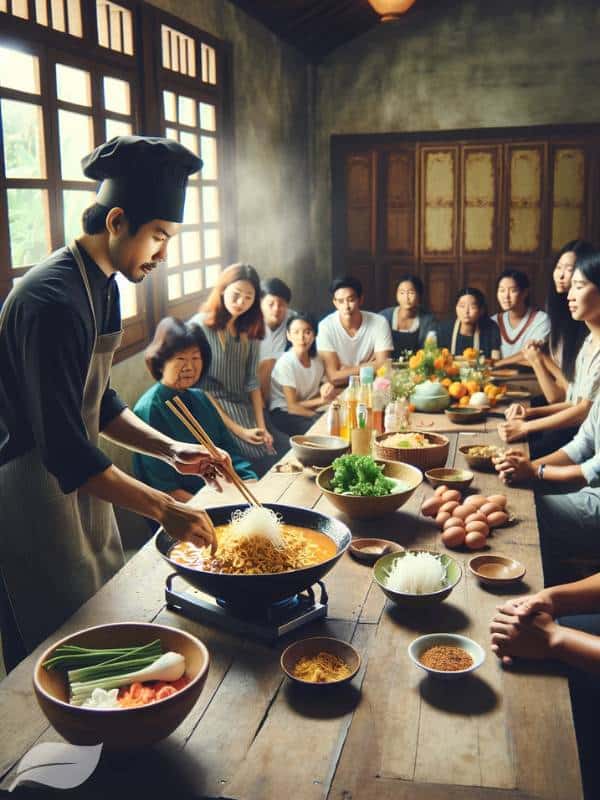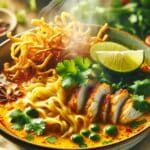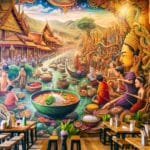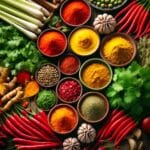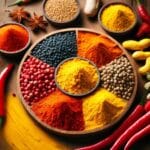Origins and Regional Influences Khao Soi Gai
Table of Contents
ToggleKey Takeaways
| Key Takeaway | Description |
|---|---|
| Origins | Traced back to the former Lanna Kingdom region encompassing parts of modern-day Northern Thailand, Myanmar, and China |
| Regional Influences | A blend of Thai, Burmese, and Chinese culinary traditions |
| Name Origins | “Khao” from the Lao word for rice, “Soi” from the Chinese word for noodles |
| Key Ingredients | Rich coconut-based curry broth (Thai/Burmese influence), egg noodles (Chinese influence) |
| Spice Blend | Turmeric, coriander, cumin, shallots – reflecting Thai and Burmese spice traditions |
| Regional Adaptations | Different communities incorporated local ingredients and twists |
| Cultural Significance | Represents Northern Thailand’s diverse culinary tapestry and spirit of cultural exchange |
| Contemporary Impact | Driving culinary tourism, cooking schools, sustainable agriculture in the region |
Origins and Regional Influences of this Khao Soi Gai Dish
Khao Soi Gai, the beloved coconut curry noodle soup from Northern Thailand, is a fascinating amalgamation of diverse cultural influences.
To truly understand this iconic dish, we must delve into its origins and the regional elements that have shaped its unique flavor profile.
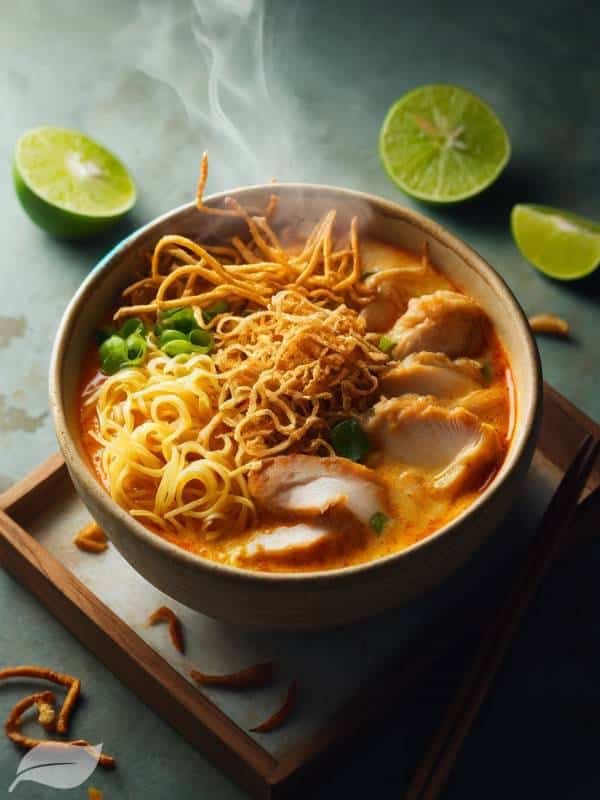
Roots of Khao Soi Gai
The roots of Khao Soi Gai can be traced back to the former Lanna Kingdom, a region that encompassed parts of modern-day Northern Thailand, as well as neighboring areas of Myanmar and China.
This region was a melting pot of cultures, with Thai, Burmese, and Chinese communities coexisting and exchanging culinary traditions.
The dish’s name itself is a testament to this cultural exchange, combining the Lao word “khao” (meaning rice) and the Chinese word “soi” (referring to noodles).
This linguistic fusion reflects the harmonious blend of ingredients and cooking techniques that gave birth to Khao Soi Gai.
One of the dish’s defining characteristics is its rich, coconut-based curry broth, which draws inspiration from the Thai and Burmese love for fragrant curries.
However, the use of egg noodles is a nod to the Chinese influence, as noodles have been a staple in Chinese cuisine for centuries.
The complex curry paste that forms the backbone of Khao Soi Gai is a harmonious blend of spices and aromatics, including turmeric, coriander, cumin, and shallots.
These ingredients reflect the culinary traditions of Thai and Burmese cuisines, which have long embraced vibrant spice blends.
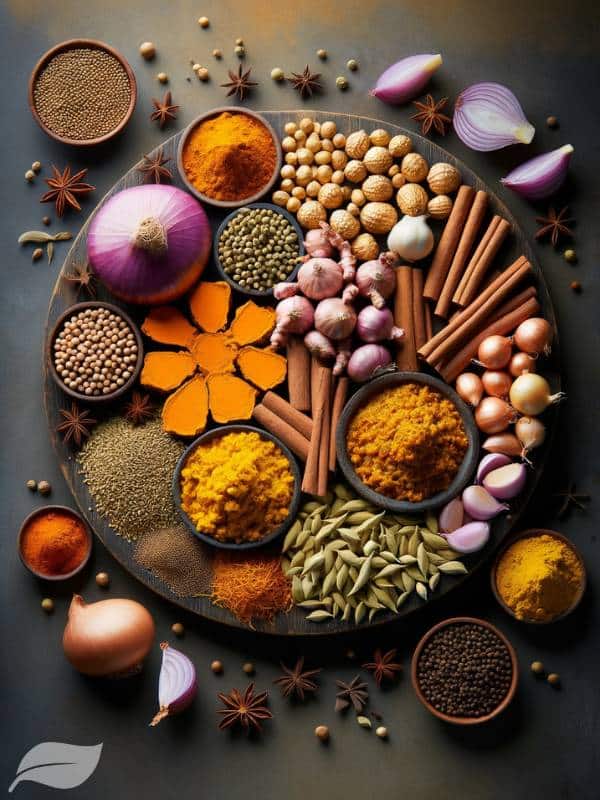
Regional Adaptations of Khao Soi Gai
As Khao Soi Gai became a beloved staple in Northern Thailand, it also developed regional variations and adaptations.
Different communities and villages would incorporate their twists, using locally available ingredients and reflecting their unique culinary heritage.
Today, Khao Soi Gai is a cultural icon in Northern Thailand, representing the region’s diverse culinary tapestry.
It is a dish that transcends mere sustenance, embodying the spirit of cultural exchange and the enduring appeal of well-crafted flavors.
Whether served as a comforting home-cooked meal or enjoyed from a street vendor, Khao Soi Gai is a delicious reminder of the power of cultural fusion and the enduring legacy of Northern Thailand’s rich culinary heritage.
While Khao Soi Gai shares some similarities with other Thai curries, it also possesses distinct differences that set it apart, reflecting the unique regional influences that have shaped its evolution.
As the dish’s popularity continues to soar, it has become a driving force behind culinary tourism in Northern Thailand, drawing visitors worldwide to experience its authentic flavors.
Cooking schools have emerged, offering hands-on experiences and insights into the art of preparing this iconic dish.
The impact of Khao Soi Gai on local agriculture cannot be overstated.
Small-scale farmers cater to the demand for specific ingredients, driving sustainable farming practices and supporting the local economy.
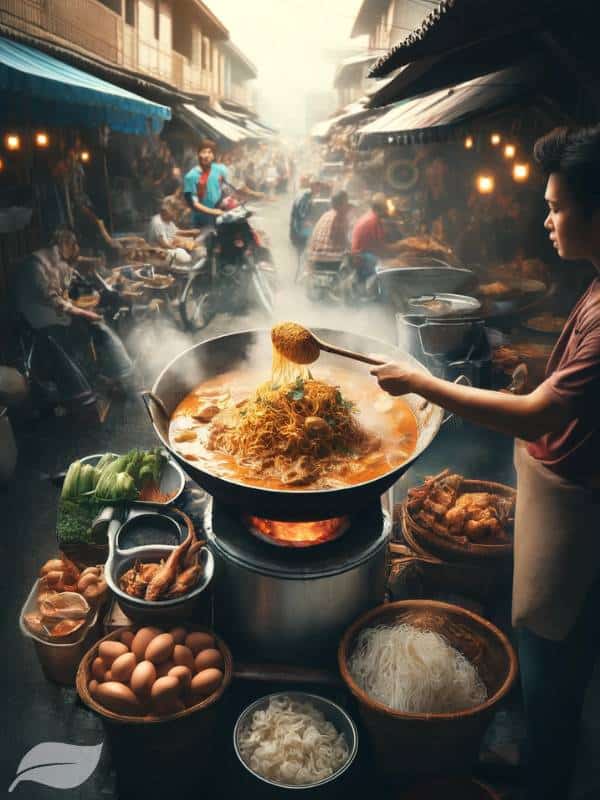
Cultural Significance of Khao Soi Gai
Beyond its culinary appeal, Khao Soi Gai holds deep cultural significance in Northern Thailand, often taking center stage during festivals and celebrations.
The dish has even been featured in Thai literature and folklore, reflecting its enduring legacy and representation of Thai identity.
As Khao Soi Gai continues to captivate palates around the world, it is represented in Thai restaurants worldwide, allowing diners to experience its authentic flavors beyond Northern Thailand.
Chefs outside Thailand have also embraced the dish, often incorporating it into Western menus and putting their own creative twists on this beloved classic.
While its health aspects are often debated, one thing remains certain: Khao Soi Gai is a delicious and nutritious dish that can be enjoyed as part of a balanced diet. It offers a unique combination of flavors and culinary traditions.
In the ever-evolving Thai culinary scene, Khao Soi Gai stands as a shining example of how cultural exchange can give birth to culinary masterpieces.
Its distinct flavor profile sets it apart from similar dishes in neighboring countries, solidifying its status as a true icon of Northern Thai cuisine.
Embracing the Heritage of Khao Soi Gai
As you embark on your journey to discover the wonders of Khao Soi Gai, remember that this dish is more than just a meal.
It is a celebration of the rich cultural heritage and culinary traditions that have shaped Northern Thailand for centuries.
